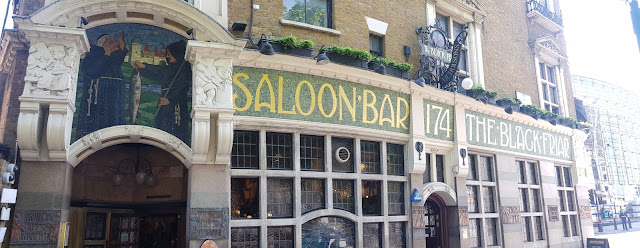 |
| The Blackfriar public house. |
On the odd occasion that I fancy a drink, when walking around London, I never stop at one of those pubs that has no character, preferring to find a pub with a bit of history.
So it was while walking westward along the River Thames that I spotted this odd shaped building, across the road from Blackfriars station.
 |
| The wedge shaped Blackfriar pub. |
As I approached I realised that it was a pub and, so, headed in. And what a place it is.
 |
| Some of the bronze relief around the top of the bar. |
The pub is remarkably deceptive as, when viewed from the outside, it looks long and narrow, but, once inside, the pub opens up with a substantial bar area, for a pub this small, that contains booths, tables and areas to just stand.
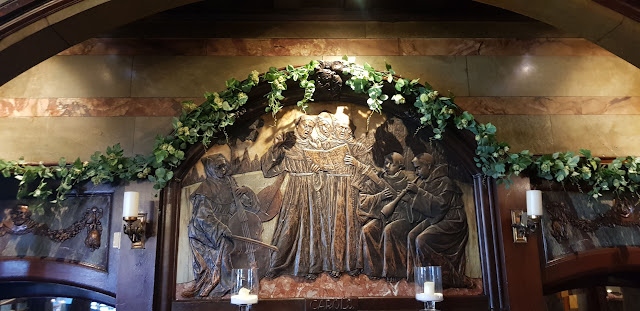 |
| Scenes from the life of a monk. |
A dining area, set under the adjoining railway arch, which I didn't visit on this occasion, is furnished with sculptures.
 |
| A day in the life of a monk. |
Around the tops of the walls bronze reliefs showed Dominican Friars going about there daily tasks, while a stained glass window allowed a rainbow of light to filter into the room.
 |
| Stained Glass Window. |
There was obviously some serious history to this pub, so I bought a pint of ale and sat outside at one of the tables.
It was from here that I noticed the quirky carvings that adorn the outside of the building.
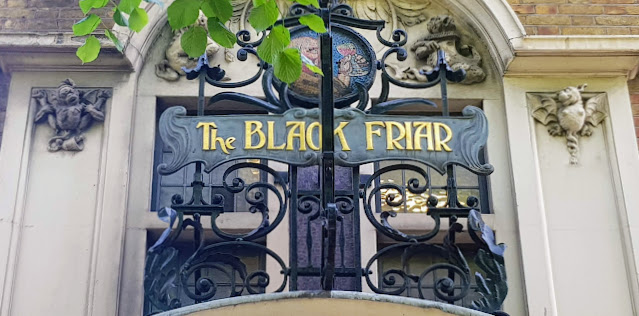 |
| The sculptors had fun with these two. |
With my thirst suitably quenched I returned my empty glass to the bar and continued westward, vowing to return to this place again.
Brief History
This building stands adjacent to the site of a monastery that was built in 1180. As was the norm for monasteries at the time at the time the monks were allowed to brew beer and open an inn.
From the beginning of the 13th century the monks had an inn that remained open for 300 years. It was the Black Friar's Inn attached to the Black Friars monastery.
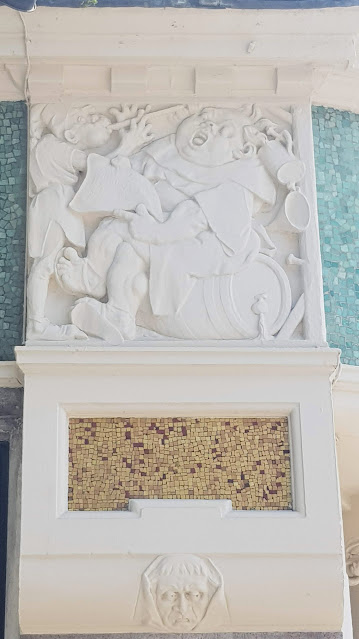 |
| Jolly Friars. |
The building that the pub now inhabits was built in 1875 on the site of the medieval Dominican friary, the Blackfriars Monastery..
Refurbishments took place in 1905 and 1917, spearheaded by the architect Herbert Fuller-Clark. Much of the interior design was completed by the sculptors Frederick T. Callcott and Henry Poole.
The bronze reliefs, inside the bar area, show scenes from the daily lives of the monks.
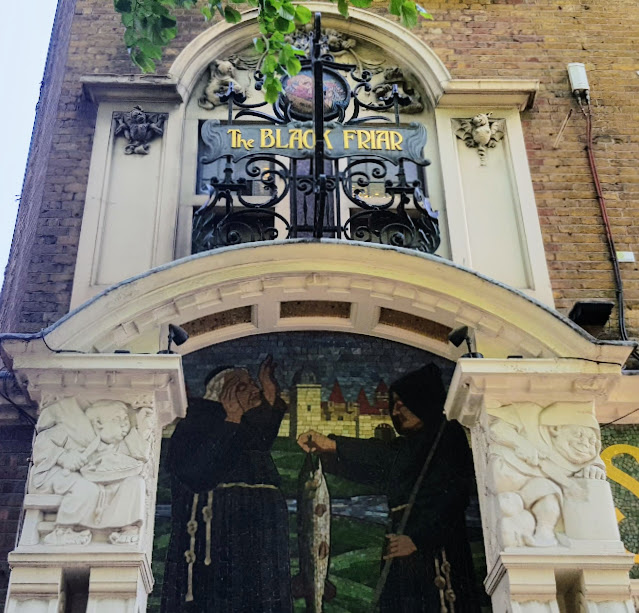 |
| Some of the carvings and mosaic above one of the entrances. |
This wedge-shaped building is the only Art Nouveau public house in London.
The building became Grade II* listed in 1972.
Oh, and the building has a ghost that opens and closes doors and moves objects.
The pub is owned by Nicholson's Pubs and was one of their first pubs to open.
In 2023 Nicholson's celebrates 150 years of operation.
Details (all details correct at time of publishing)
- Established - 1875
- Food - Yes
- Outside seating - Yes
- Riverside - No
- Location - EC4V 4EG
- Opening times -
- Monday 11:30 - 23:00
- Tuesday 11:30 - 23:00
- Wednesday 11:30 - 23:00
- Thursday 11:30 - 23:00
- Friday 11:30 - 23:00
- Saturday 11:30 - 23:00
- Sunday 12:00 - 18:00
Looking forward to visiting it with you soon.
ReplyDeleteI can't wait, either. It's a wonderful place.
Delete